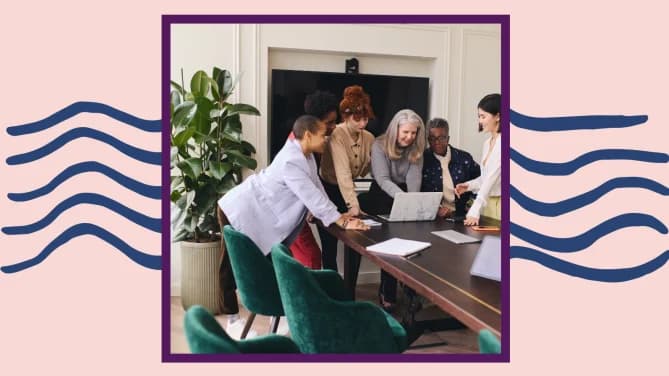Thinking of Starting an ERG at Your Place of Work? Here are 6 Ways to Ensure It's Inclusive
Spurred by changing circumstances and myriad events, organizations across industries are increasingly recognizing the importance of diversity, equity, and inclusion (DEI). There are plenty of benefits, including offering better services thanks to the many perspectives that go into your organization and facilitating stronger collaboration.
But how can you make your organization more inclusive? One answer is employee resource groups (ERGs).
First things first: What’s an ERG?
ERGs are groups within an organization focused on giving voices to traditionally underrepresented employees. They are led by employees and serve their colleagues by bringing together marginalized populations and celebrating people from diverse backgrounds. In practice, they are meant to give individuals at the company a voice when they may not have had one previously.
ERGs organize events, instill a sense of community, and otherwise engage employees as allies, ultimately creating a stronger, more equitable community and overall workplace.
How to build an inclusive ERG
1. Ask employees what they want in an ERG.
In order to make your ERG inclusive, it must be representative of the voices in the community it serves. This starts with understanding the needs of employees. Seek input from your colleagues, accounting for multiple perspectives. That way, you can build a group that truly stands for the interests of its members and embraces their backgrounds.
2. Define the purpose, mission, and values.
Your ERG, though part of your organization, has its own structure and purpose. There should be unique values and goals — which all should in some way promote inclusivity both within the group and within the larger organization. Clearly define the structure, purpose, mission, and values upfront.
3. Secure a sponsor.
Sponsors are usually higher-level leaders or executives at your company. Think of them as a way to convey your ideas to the higher-ups. When you find a sponsor who believes in your ERG and its mission, they have the power to communicate your thoughts and help you realize real change within the company.
4. Ensure that the mission aligns with the company mission.
Your ERG is not operating in a vacuum. It’s part of a larger organization with goals and values. In order for your group to prove successful, its own mission must align with that of the larger company. Work with your sponsor to develop objectives that are in line with those of the organization itself.
5. Afford members' autonomy.
Once you have added structure to your ERG, give your members the autonomy to promote their own causes and bring different issues to the attention of their colleagues. They might have ideas about partnerships, services — and how to make your group a more inclusive and welcoming one — but they need the space to develop these ideas. By letting them know that they can be independent, you are promoting equity and instilling responsibility, even within the ERG.
6. Consider event accessibility.
DEI isn’t just about creating an ERG — the ERG itself must promote an inclusive agenda. In order to make this possible, you must ensure that your events are accessible. Consider factors like timing, location (remote or otherwise), and more. You want to make your events and the ERG itself as welcoming as possible, which means encouraging as many people to partake as possible.
Your ERG is meant to promote inclusivity — so it must be inclusive itself. Put thought and attention into creating one that is truly representative of your mission and people of diverse backgrounds and perspectives.
--
This article reflects the views of the author and not necessarily those of Fairygodboss.
What’s your no. 1 piece of advice for making ERGs more inclusive? Share your answer in the comments to help other Fairygodboss members!
Why women love us:
- Daily articles on career topics
- Jobs at companies dedicated to hiring more women
- Advice and support from an authentic community
- Events that help you level up in your career
- Free membership, always
